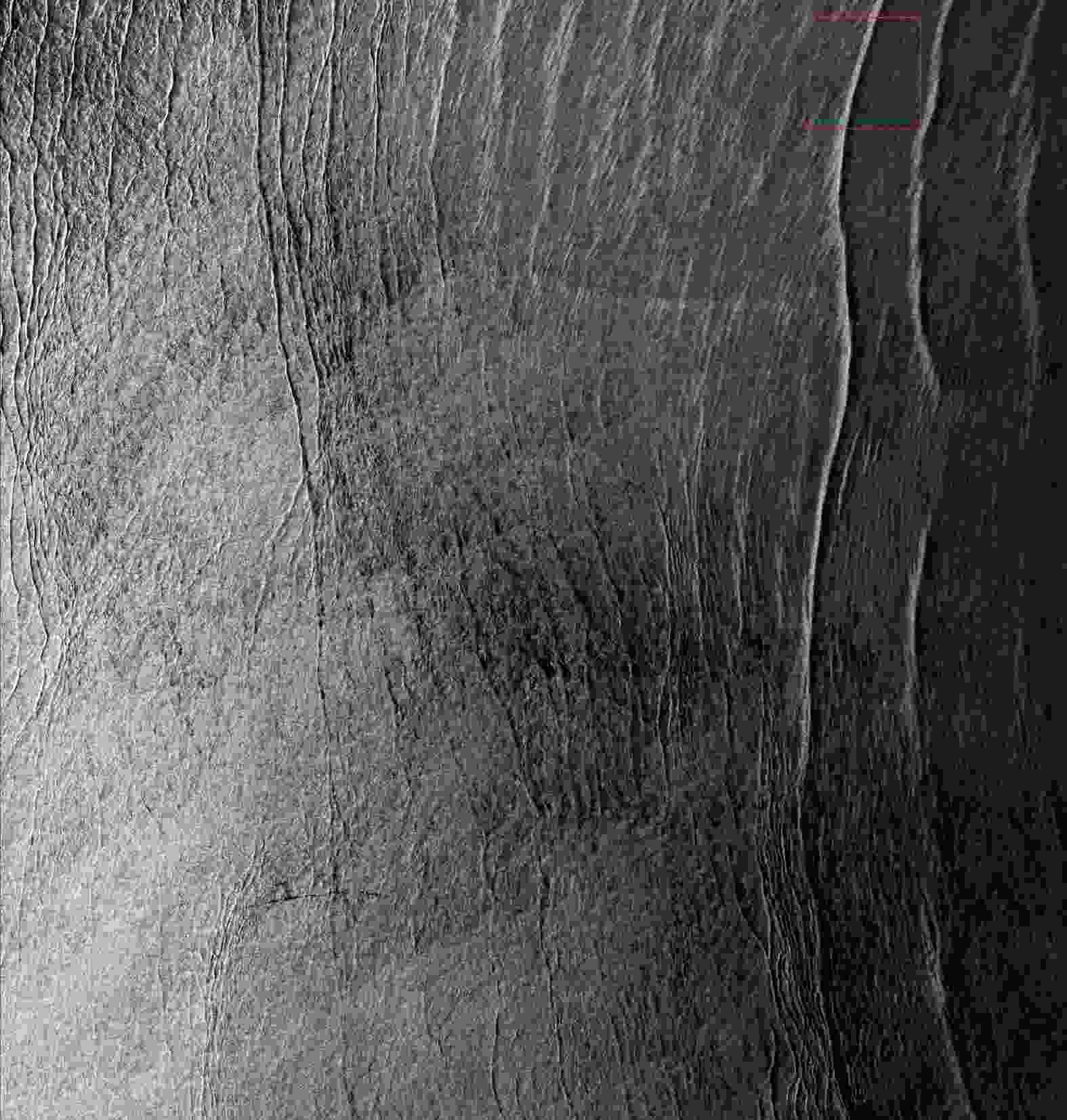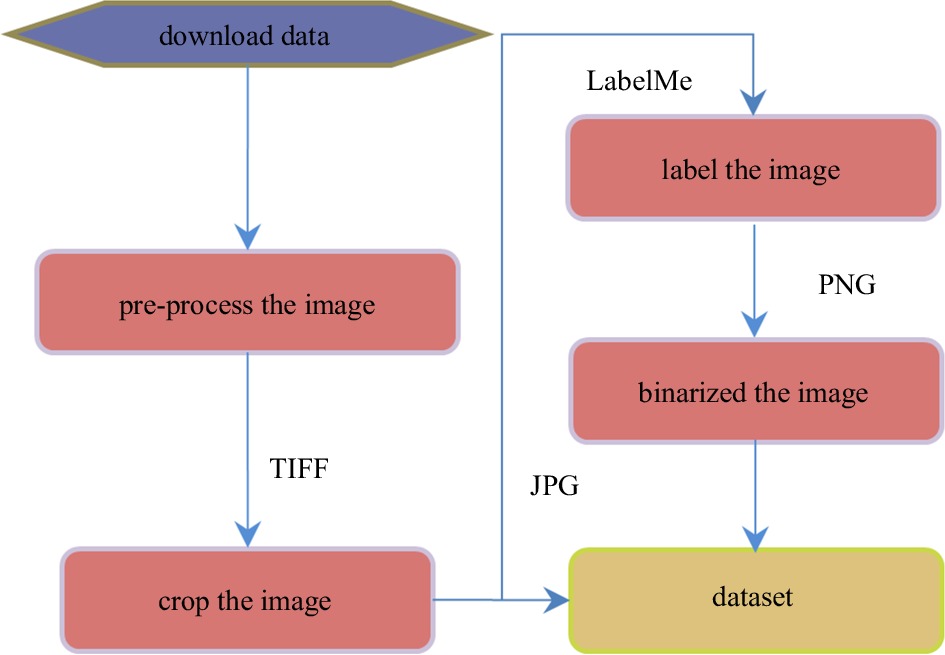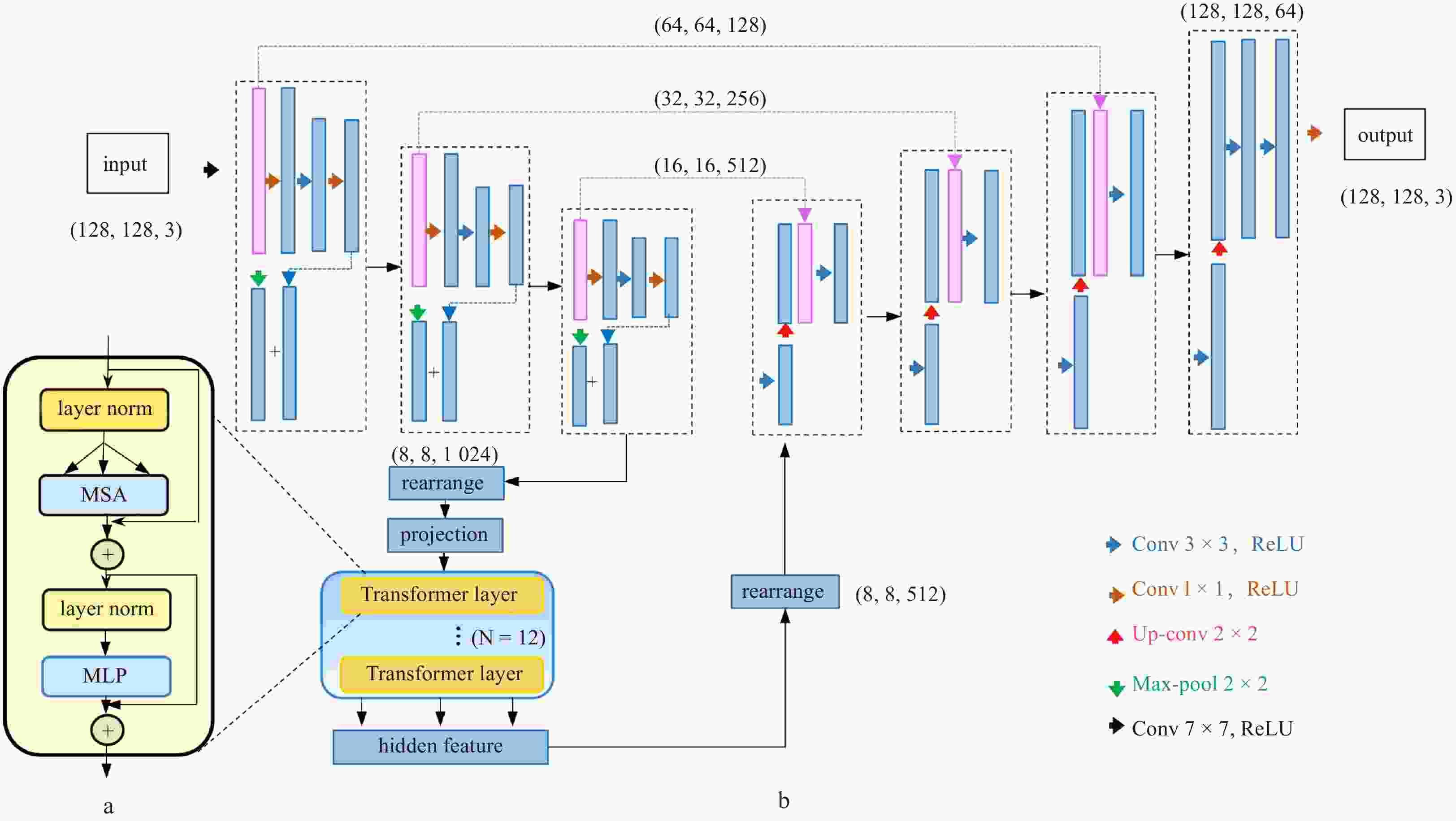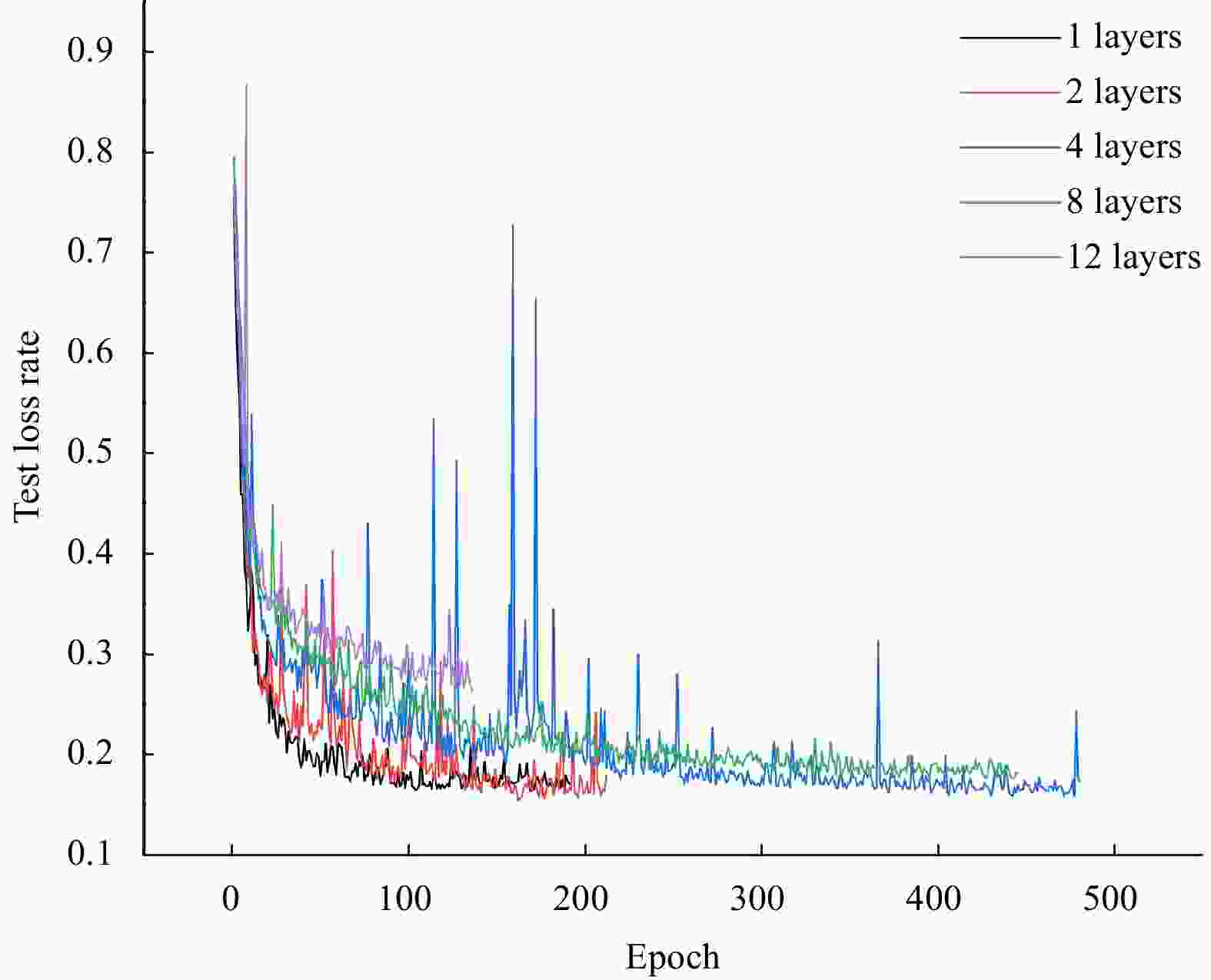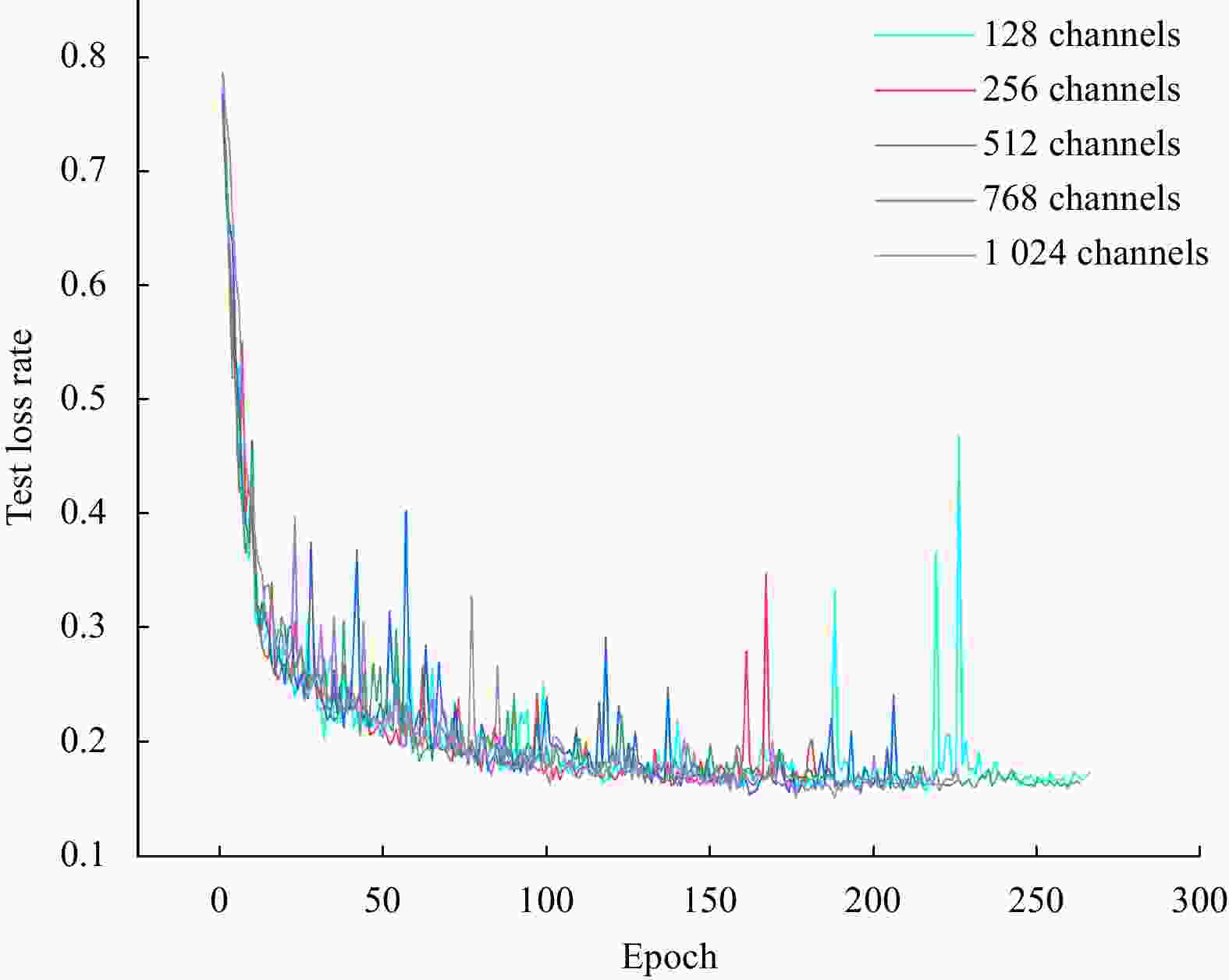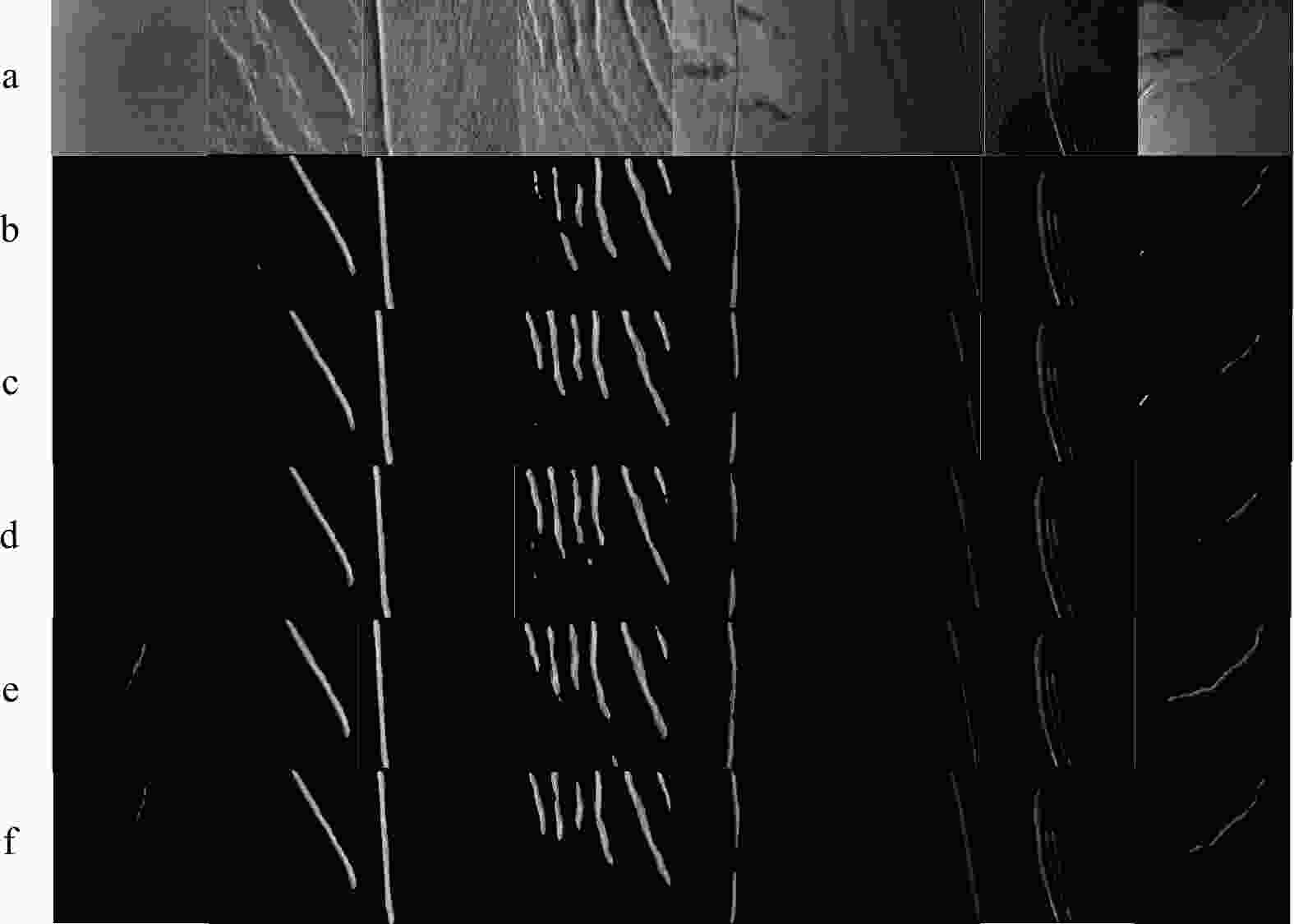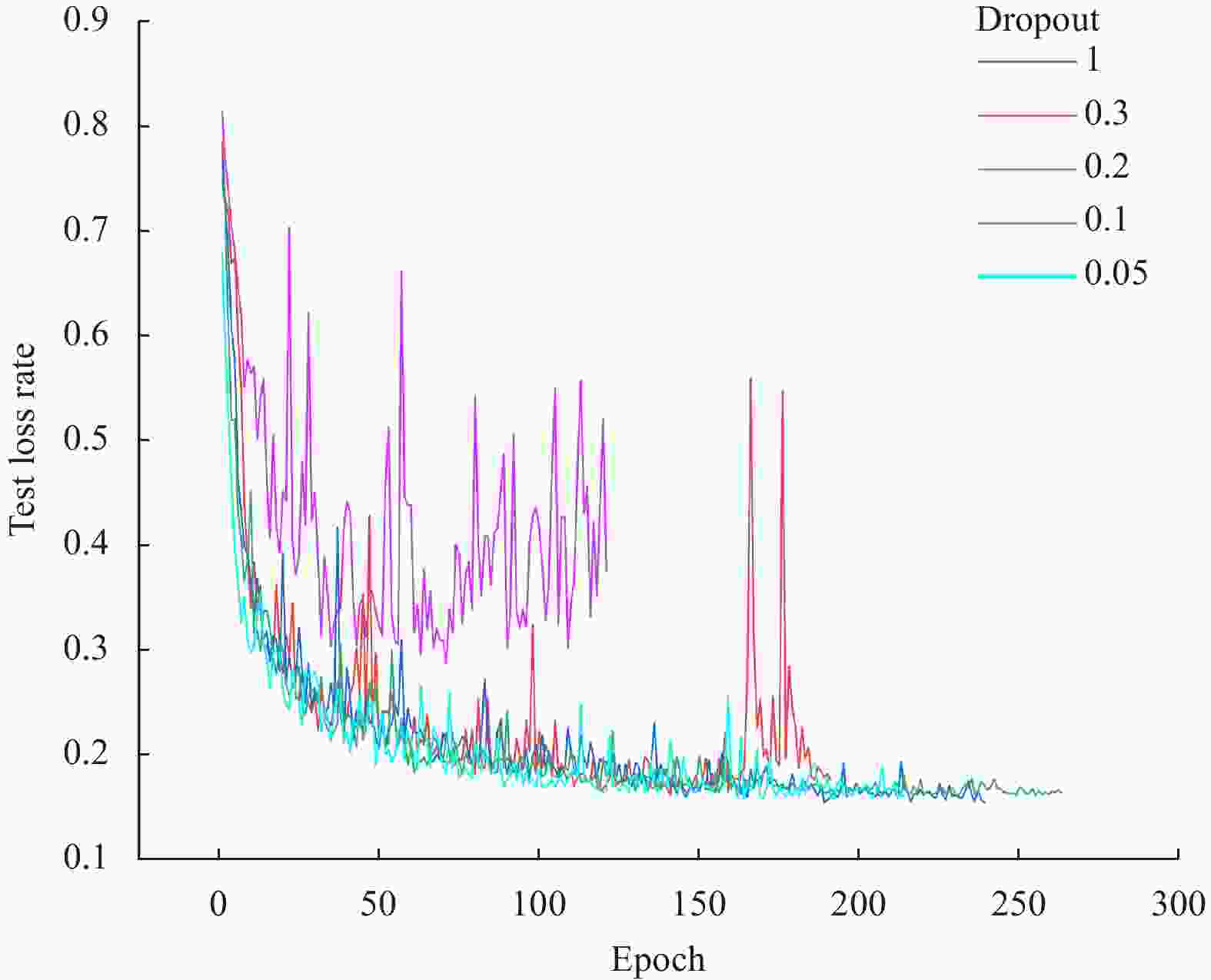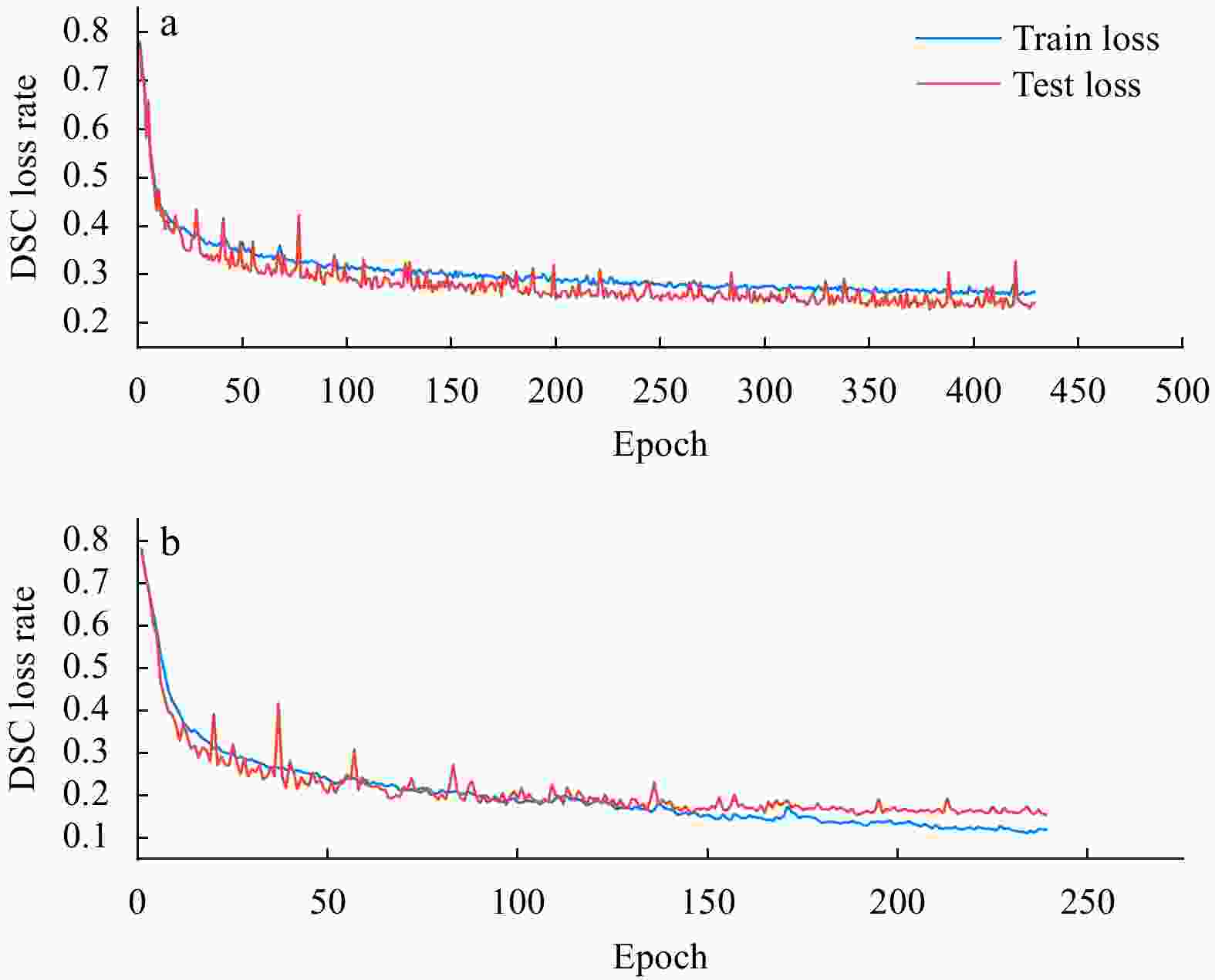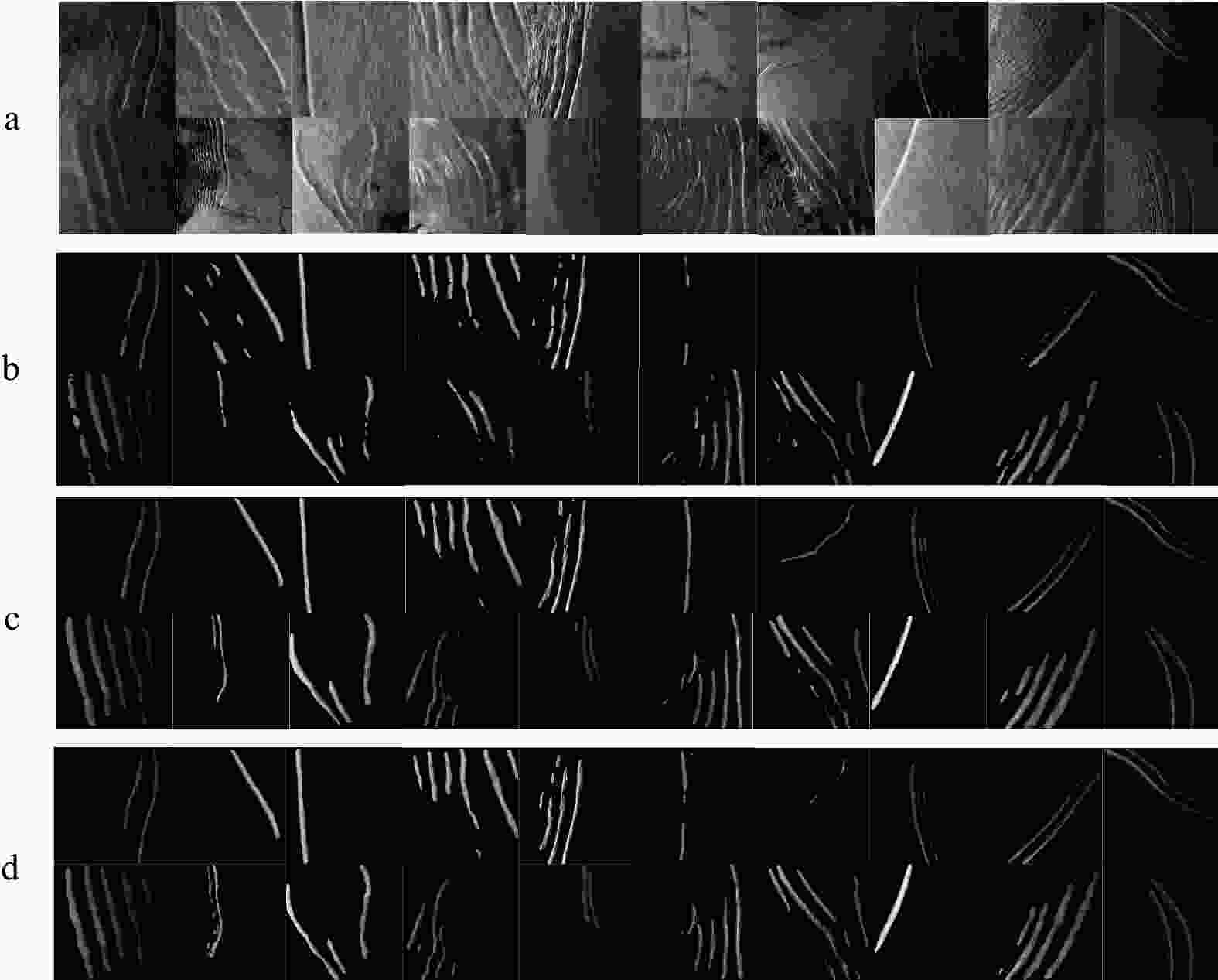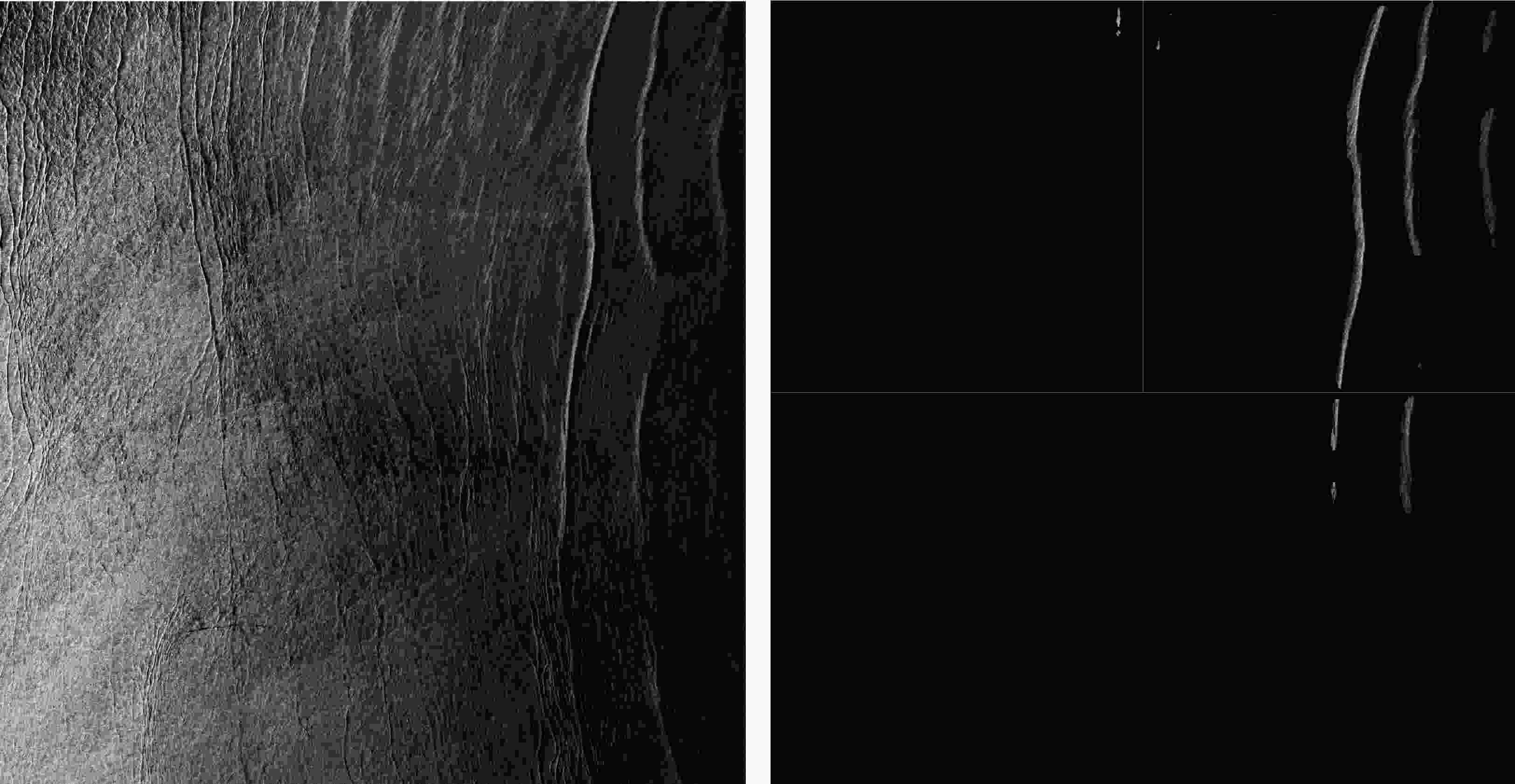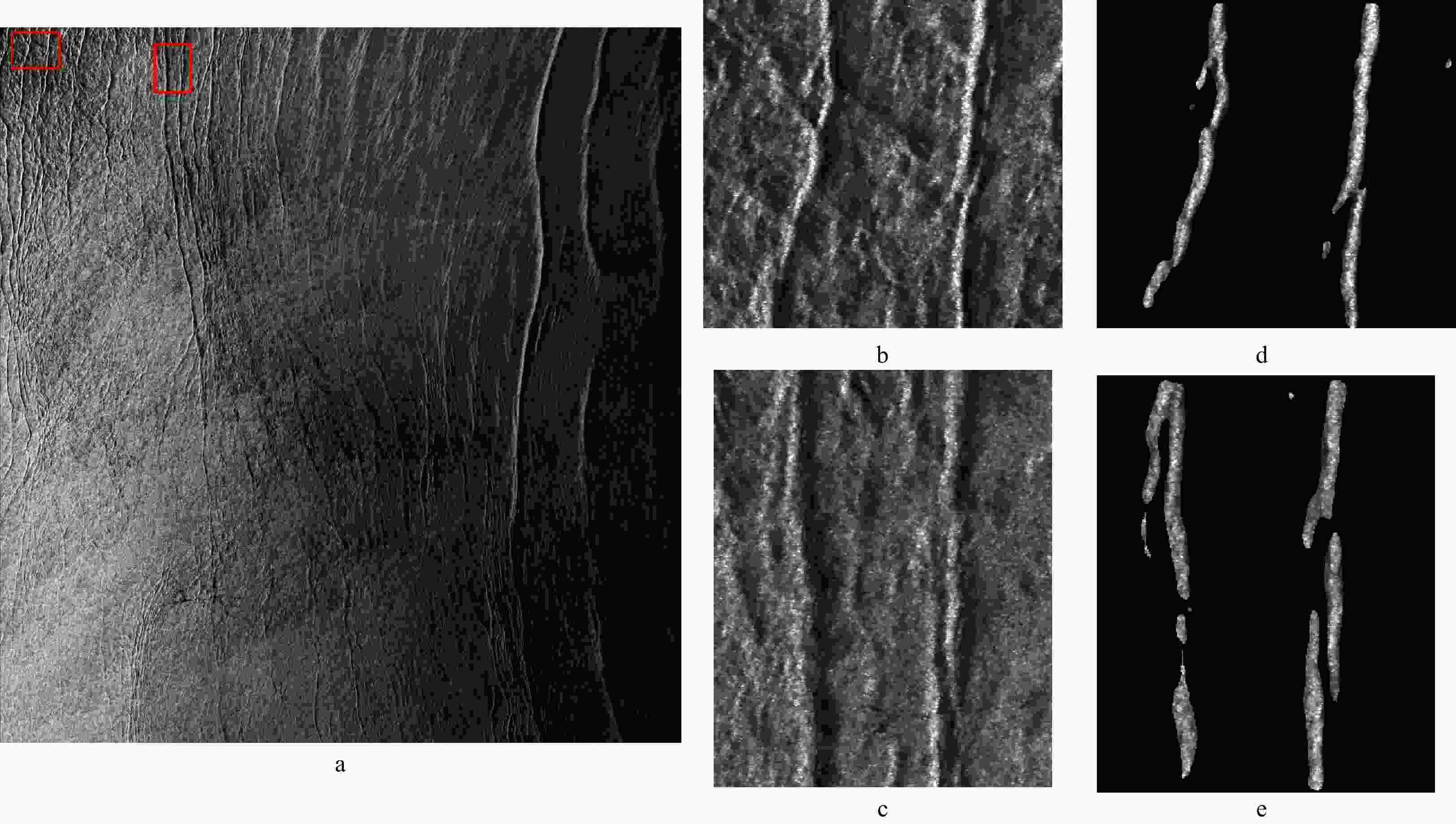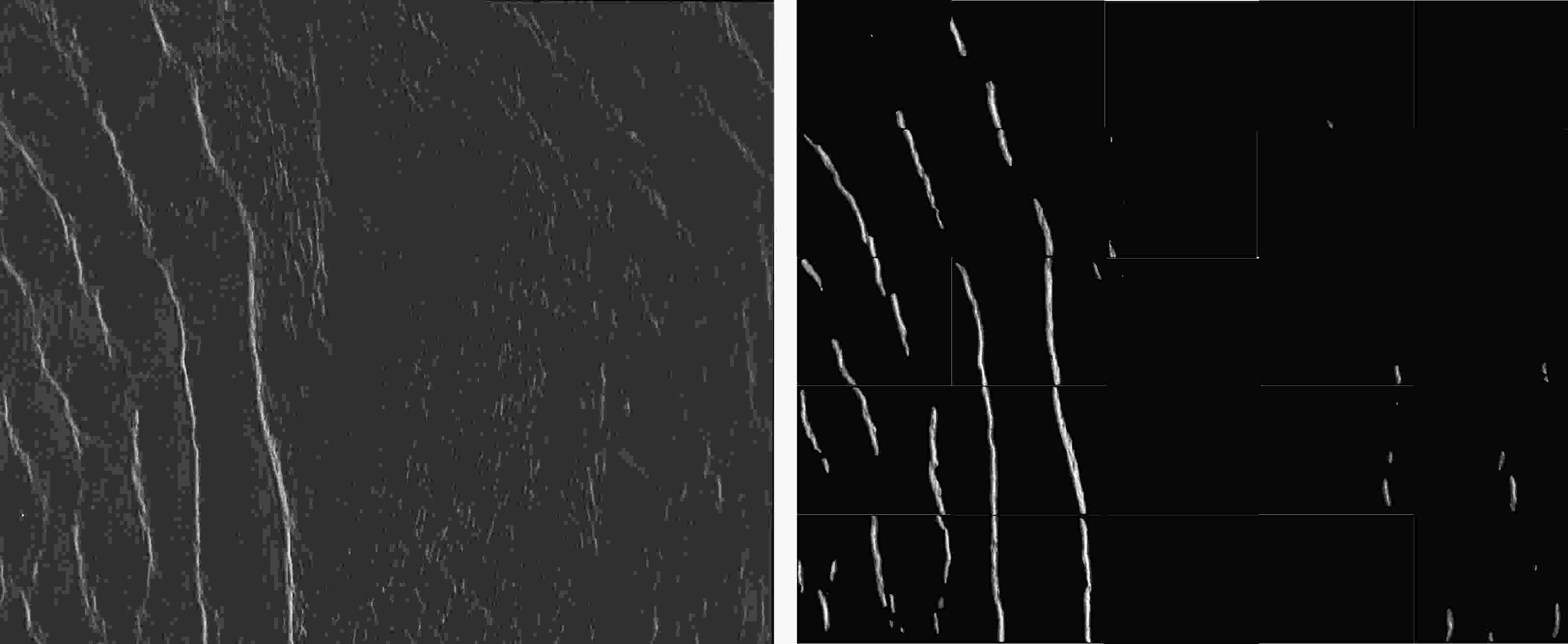-
Abstract: The development of oceanic remote sensing artificial intelligence has made possible to obtain valuable information from amounts of massive data. Oceanic internal waves play a crucial role in oceanic activity. To obtain oceanic internal wave stripes from synthetic aperture radar (SAR) images, a stripe segmentation algorithm is proposed based on the TransUNet framework, which is a combination of U-Net and Transformer, which is also optimized. Through adjusting the number of Transformer layer, multi-layer perceptron (MLP) channel, and Dropout parameters, the influence of over-fitting on accuracy is significantly weakened, which is more conducive to segmenting lightweight oceanic internal waves. The results show that the optimized algorithm can accurately segment oceanic internal wave stripes. Moreover, the optimized algorithm can be trained on a microcomputer, thus reducing the research threshold. The proposed algorithm can also change the complexity of the model to adapt it to different date scales. Therefore, TransUNet has immense potential for segmenting oceanic internal waves.
-
Key words:
- oceanic internal waves /
- deep learning /
- stripe segmentation /
- synthetic aperture radar /
- TransUNet
-
Table 1. The effects of Transformer layer and multi-layer perceptron (MLP) channel on dice similarity coefficient accuracy (%)
Transformer layer 1 2 4 8 12 MLP channel 128 84.13 84.18 82.35 82.64 75.22 MLP channel 256 84.15 83.75 83.49 82.50 72.92 MLP channel 512 83.73 84.57 84.19 82.61 73.73 MLP channel 768 84.09 83.95 80.37 82.49 77.2 MLP channel 1024 84.00 84.89 80.54 82.66 76.6 Table 2. Model training performance at different rates
Rate Training loss Test loss 6:2:2 0.1797 0.3191 7:1.5:1.5 0.1902 0.2806 8:1:1 0.1575 0.2039 9:0.5:0.5 0.1564 0.2585 -
Alpers W. 1985. Theory of radar imaging of internal waves. Nature, 314(6008): 245–247. doi: 10.1038/314245a0 Bao Sude, Meng Junmin, Sun Lina, et al. 2020. Detection of ocean internal waves based on faster R-CNN in SAR images. Journal of Oceanology and Limnology, 38(1): 55–63. doi: 10.1007/S00343-019-9028-6 Chen Jieneng, Lu Yongyi, Yu Qihang, et al. 2021. TransUNet: transformers make strong encoders for medical image segmentation. Preprint arXiv, https://arxiv.org/abs/2102.04306v1[2021-02-08/2022-07-29 Dosovitskiy A, Beyer L, Kolesnikov A, et al. 2021. An image is worth 16×16 words: transformers for image recognition at scale. Preprint arXiv, https://arxiv.org/abs/2010.11929v2[2021-06-03/2022-07-29 Krizhevsky A, Sutskever I, Hinton G E. 2017. ImageNet classification with deep convolutional neural networks. Communications of the ACM, 60(6): 84–90. doi: 10.1145/3065386 Lavrova O Y, Mityagina M I, Serebryany A N, et al. 2014. Internal waves in the Black Sea: satellite observations and in-situ measurements. In: Proceedings of SPIE 9240, Remote Sensing of the Ocean, Sea Ice, Coastal Waters, and Large Water Regions 2014. Amsterdam, Netherlands: SPIE Li Xiaofeng, Liu Bin, Zheng Gang, et al. 2020. Deep-learning-based information mining from ocean remote-sensing imagery. National Science Review, 7(10): 1584–1605. doi: 10.1093/NSR/NWAA047 Ronneberger O, Fischer P, Brox T. 2015. U-Net: convolutional networks for biomedical image segmentation. In: Proceedings of the 18th International Conference on Medical Image Computing and Computer-Assisted Intervention. Munich, Germany: Springer, 234–241 Russell B C, Torralba A, Murphy K P, et al. 2008. LabelMe: a database and web-based tool for image annotation. International Journal of Computer Vision, 77(1–3): 157–173. doi: 10.1007/s11263-007-0090-8 Shelhamer E, Long J, Darrell T. 2017. Fully convolutional networks for semantic segmentation. IEEE Transactions on Pattern Analysis and Machine Intelligence, 39(4): 640–651. doi: 10.1109/TPAMI.2016.2572683 Simonyan K, Zisserman A. 2015. Very deep convolutional networks for large-scale image recognition. Preprint arXiv, https://arxiv.org/abs/1409.1556v6[2015-04-10/2022-07-29 Srivastava N, Hinton G, Krizhevsky A, et al. 2014. Dropout: a simple way to prevent neural networks from overfitting. Journal of Machine Learning Research, 15(1): 1929–1958 Vaswani A, Shazeer N, Parmar N, et al. 2017. Attention is all you need. In: Proceedings of the 31st International Conference on Neural Information Processing Systems. Long Beach, USA: Curran Associates Inc. Wang Shengke, Dong Qinghong, Duan Lianghua, et al. 2019. A fast internal wave detection method based on PCANet for ocean monitoring. Journal of Intelligent Systems, 28(1): 103–113. doi: 10.1515/JISYS-2017-0033 Zaremba W, Ilya S, Oriol V. 2014. Recurrent neural network regularization. Preprint arXiv, http://arXiv.org/abs/1409.2329v5[2015-02-19/2022-07-29 Zhang Hao, Meng Junmin, Sun Lina, et al. 2020. Performance analysis of internal solitary wave detection and identification based on compact polarimetric SAR. IEEE Access, 8: 172839–172847. doi: 10.1109/ACCESS.2020.3025946 Zheng Yinggang, Zhang Hongsheng, Qi Kaituo, et al. 2022. Stripe segmentation of oceanic internal waves in SAR images based on SegNet. Geocarto International, 37(25): 8567–8578. doi: 10.1080/10106049.2021.2002430 Zheng Yinggang, Zhang Hongsheng, Wang Youqiang. 2021. Stripe detection and recognition of oceanic internal waves from synthetic aperture radar based on support vector machine and feature fusion. International Journal of Remote Sensing, 42(17): 6706–6724. doi: 10.1080/01431161.2021.1943040 -




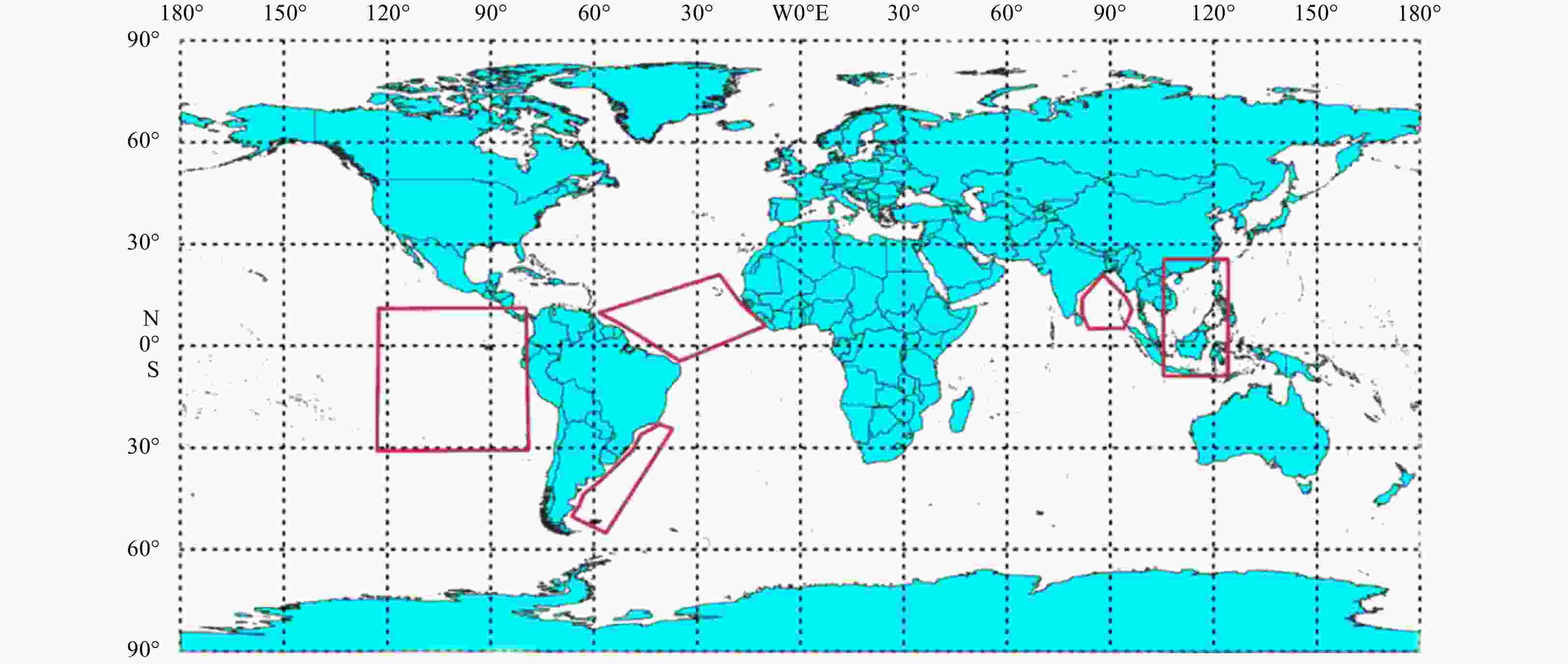
 下载:
下载:
